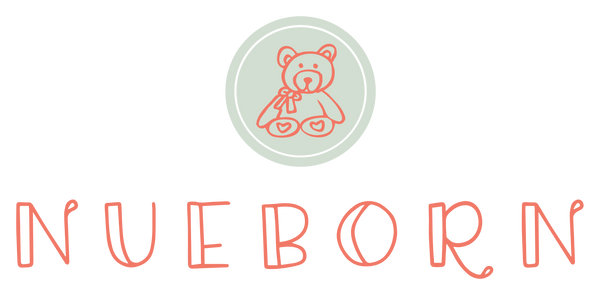
Newborn Clothing: Everything First-Time Parents Need to Know
Share
Are you planning to have a baby anytime soon or are you on the to having one? You must already be shopping for newborn clothing, hands-down one of the most exciting parts of being a parent! This can even make you feel overwhelmed because the market is filled with a variety of clothes that will get you confused! With all the texture, appearance, and colours in them, it is only logical that you would be inclined to buy everything.
Luckily, we are here to save you time and give you all the information you need to buy newborn clothing for your precious baby.
The Basics of Choosing Newborn Clothing
High-quality garments have better longevity. We suggest purchasing high-quality garments in neutral colours, which can be passed down to your newborn’s sibling or family and friends.
Rompers are the best option for newborns. These onesies come in many styles: full sleeves with fully covered legs or half sleeves/sleeveless with partially covered legs. Some also cover the feet and have hoodies at the back. In addition, they usually have buttons at the centre of the legs for easy nappy changing.
Since newbies spend most of their time sleeping, night suits and muslin wraps for swaddling are essential items in newborn clothing. These should be light, breathable, and easy to slip on and off for nappy changes and layering.
Other clothing essentials include:
- Stretchy jumpsuits with belts
- T-shirts with envelope necks that are easy to pull over your newborn’s head
- Jackets with zips
- Woolen caps or beanies, mittens, and socks/woolen booties
- Bibs
Choosing the Best Fabric for Newborn Clothing
Newborns have very soft and sensitive skin, so the clothes you buy must be comfortable, light, and easy to take care of. Avoid rough, synthetic materials and opt for loose-fitting, 100 % pure materials. Also, check for low fire hazard labels.
Organic cotton is the most appropriate fabric for newborn garments. Cotton is easy to clean and does not harm the sensitive skin of the baby. It prevents your newborn from sweating in hot weather and also keeps them cool.
Newborn Clothing: Understanding Sizes
All newborns aren’t the same size. Some are preemies, while others might be large for their age. Sizes vary significantly between manufacturers too, so we suggest not relying solely on the label. There aren’t any rules for newborn clothing, so take a sample with you for comparison when you’re buying new clothes. Also, newbies grow really fast, so buy a reasonable number of clothes in every size.
This is the general categorisation of newborn clothes in the UK:
Newborn- Height: 42-46cm / 18" & Weight: 3 kg / 6.6 lbs.
1 month- Height: 52-56 cm / 21" & Weight: 3.5 kg / 7.71 lbs.
1-3 months- Height: 58 - 64 cm / 24" & Weight: 6.5 kg / 14.33 lbs.
Dressing and Undressing: Important Tips Newborn Clothing
It is often the act of getting dressed or undressed that causes babies to become restless and fussy. When you're frustrated, keeping calm is crucial since your panic will also make your baby feel cranky.
Here are some useful tips for changing your newborn clothing:
- Bring the room to a comfortable temperature (make sure it’s warm enough during winter) and place your baby on their changing station.
- As soon as you remove their pajamas or open their romper, place a diaper on them in case their bowel reflex kicks in.
- Stretch the neck of the t-shirt or vest open. Gently support your newborn’s head and pull the garment over their head from the back. Be careful not to scrape or scratch your baby’s face. Close your baby’s fists and gently pull their arms through the armholes.
- For jackets, jumpsuits, and rompers, unbutton or unzip them and lay your baby on top, face up. Gently pull your newborn’s arms and legs through the holes and fasten up.
- Do the opposite when undressing.
A good recommendation is to dress your newborn baby in layers, especially in the winter. With layering you don’t have to worry about your baby getting too hot or too cold; remove or add a layer and your newbie will become comfortable.
Unlike adults, newborns cannot let you know if they are feeling hot or cold. So, add an extra layer and dress your baby in the same layers you usually wear in the winter. Also, a newborn should not overheat, especially when they are asleep.
Washing Newborn Clothing: What to Look Out for
We recommend washing newly purchased newborn clothing before your little one wears them. This disinfects them and removes any chemicals or excess dyes that might irritate your little one’s skin. Just make sure not to use very harsh detergents or fabric softeners; opt for gentle or sensitive washing liquids.
Soiled clothes should always be soaked in sanitizer or a disinfectant before washing. The same is true for clothes covered in food, drink, or drool. Whether you should hand wash or machine-wash the clothes will be mentioned on the label.
Here’s a tip to save space: only wash the basic clothes and those you’re sure will fit your newborn. Keep the tags and receipts for all items you purchase, especially gifted clothing, so you can exchange them for better-fitted clothes or other essential newborn items.
When you’re buying newborn clothing, safety, comfort, and quality are the most important things to take notice of. Plus, make sure not to buy clothes that are very tight or made up of synthetic fabric since these may cause strangulation and choking.
Furthermore, be prepared to change a newborn clothing quite often. Nappy accidents, spit-ups, and playtime mischievousness are very common occurrences, and you might need to change your little one’s clothes multiple times a day. So, stick with garments that can easily be slipped on and off.